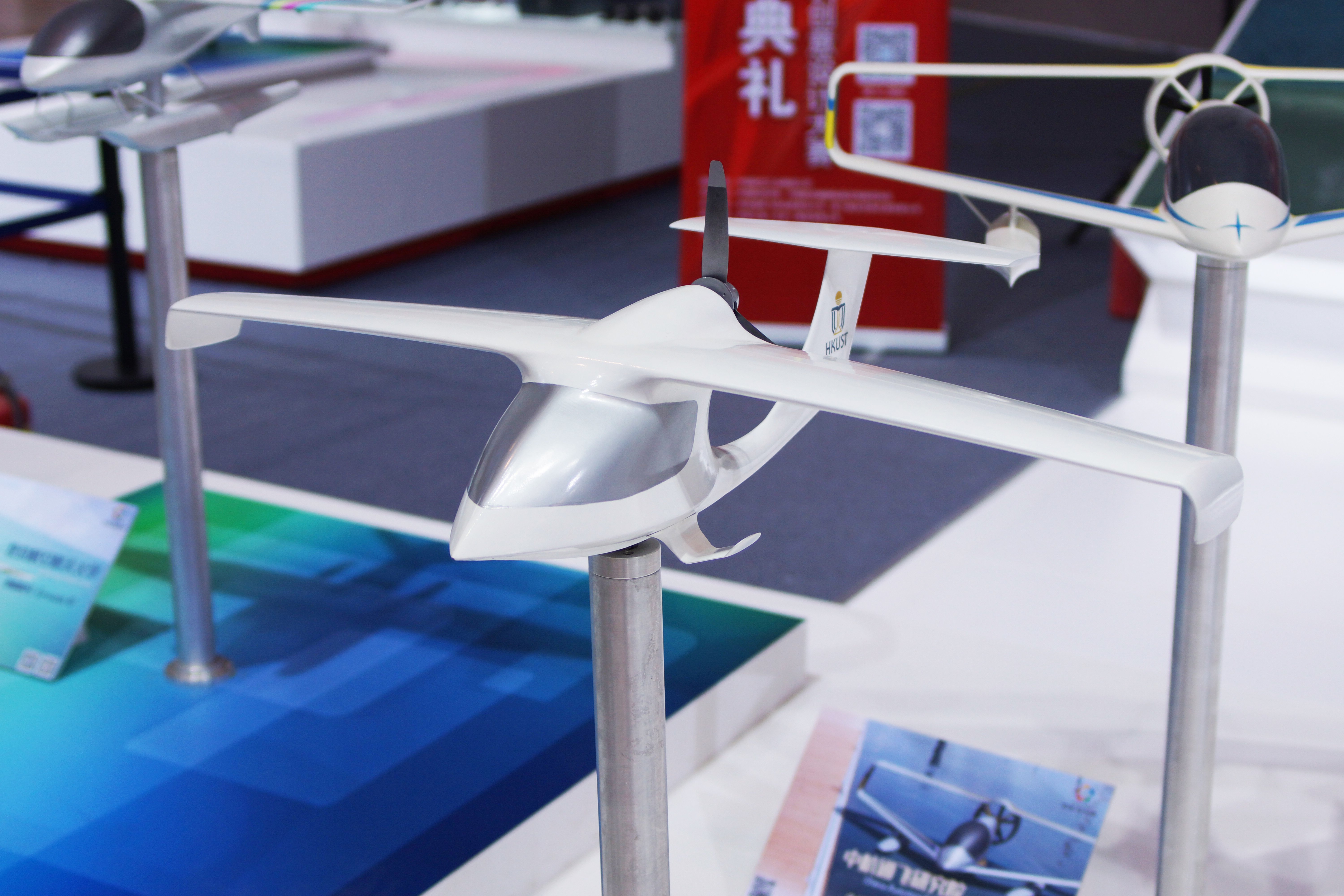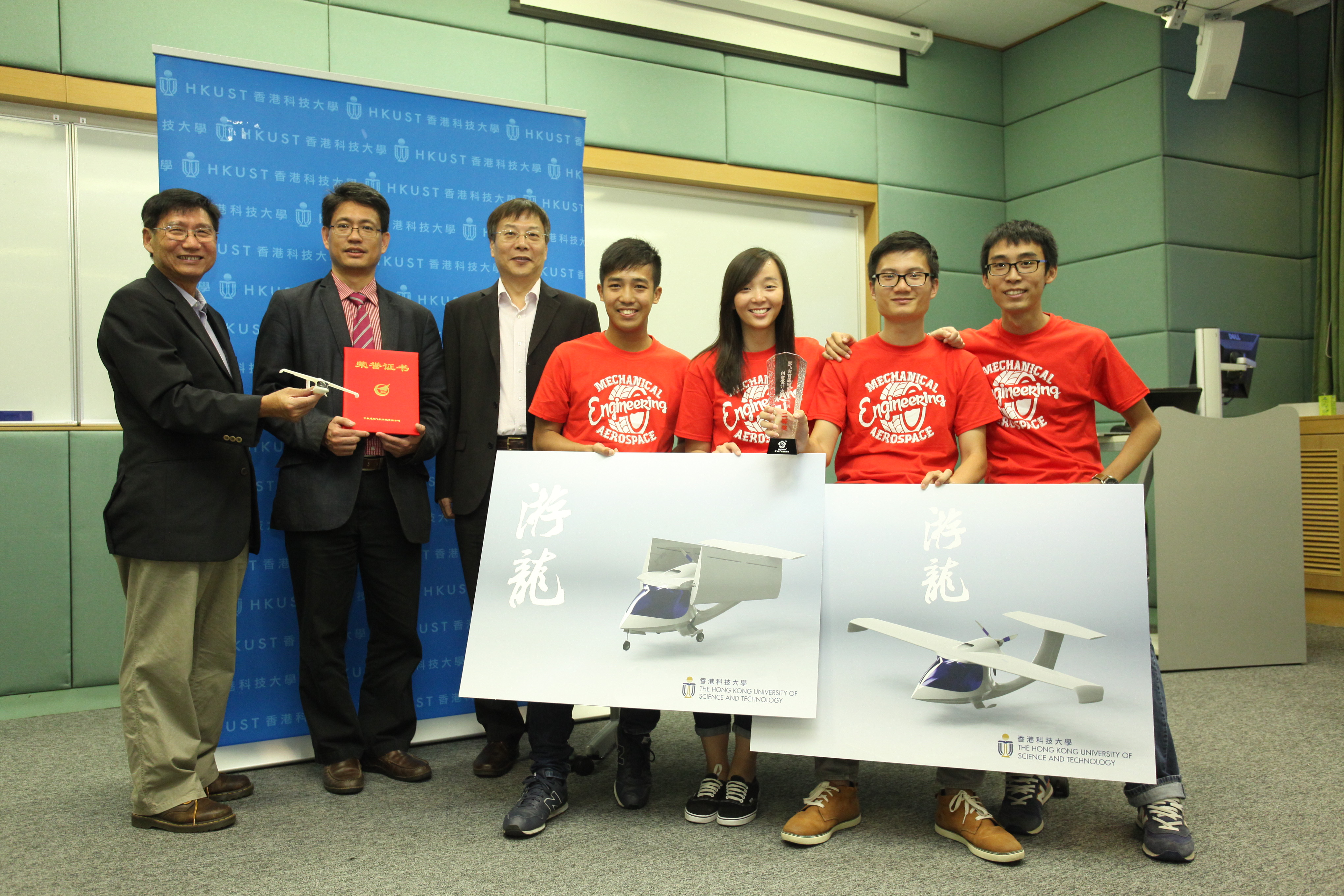HKUST Students Win National Aircraft Design Competition
Five undergraduate students from the Department of Mechanical and Aerospace Engineering at The Hong Kong University of Science and Technology (HKUST) came second among 153 teams – comprising mostly postgraduate students and professionals, in the first and biggest national aircraft design competition organized by the Aviation Industry Corporation of China (AVIC).
The “Soaring Dragon” is a two-seater amphibious aircraft featuring a pair of hydrofoils at the bottom that minimizes the take-off distance on water, a downward folding wing tip that warns pilots of water breaches and foldable wings which allows flexible movements and storage on ground. The students who created “Soaring Dragon” will be invited to join an expert team at HKUST commissioned to build a similar model for the private aviation market in Mainland China.
The five students – Haoran Chen, Chi-cheung Choi, Michelle Jia Ying Lee, Yuyang Xie and Yuanhang Zhu, who build a passenger carrier for the first time, spent a month to construct a 1:10 model for the competition, which is now on display at China Aviation Industry General Aircraft’s (CAIGA) headquarters in Zhuhai. They co-won the first runner-up with a team from a research center under CAIGA and came second to a 10-member team from Beihang University.
Executive Vice-President and Provost Wei Shyy, an accomplished aerospace engineer himself, said he is delighted that the HKUST student team has demonstrated their talent and innovative spirit and earned recognition in such a serious, large scale competition. “There are many youngsters in Hong Kong who have the passion and interest to design and build new generation flight vehicles. At HKUST, we are committed to helping them fulfill their dreams and contribute to the future of aviation industry, taking advantage of the high quality industrial capabilities available in the region.”
To support the development of a high-caliber aerospace engineering program, HKUST has been actively pursuing research collaborations and technological exchanges with the aviation industry. For example, under the joint sponsorship of Hong Kong Innovation Technology Fund, AVIC has supported multiple projects of the University over the past two years – including aeroelastic behavior of jet engine rotating components, advanced air vehicle structures utilizing nano-composites, high speed imaging sensor, and efficient machining and measurement of hollow blisk blades. HKUST and AVIC have signed multiple agreements to promote broad research collaboration.
“Aerospace engineering is a high value-adding manufacturing industry that create many jobs and economic benefits for the whole region, as an aviation hub and a gateway to China, Hong Kong should seize the opportunities and work closely with our mainland counterparts to develop this high-technology sector,” said Prof Christopher Chao, Head of the Mechanical and Aerospace Engineering Department.
The five students have developed their passion in aircraft modelling since small and are all determined to pursue a career in aerospace engineering. They initiated an Aeronautics Interest Group at school three years ago for students who share the dream, they have participated in many international aircraft building contests such as Design/Build/Fly hosted by the American Institute of Aeronautics and Astronautics and Fly Your Ideas by Airbus.
For media enquiries, please contact:












